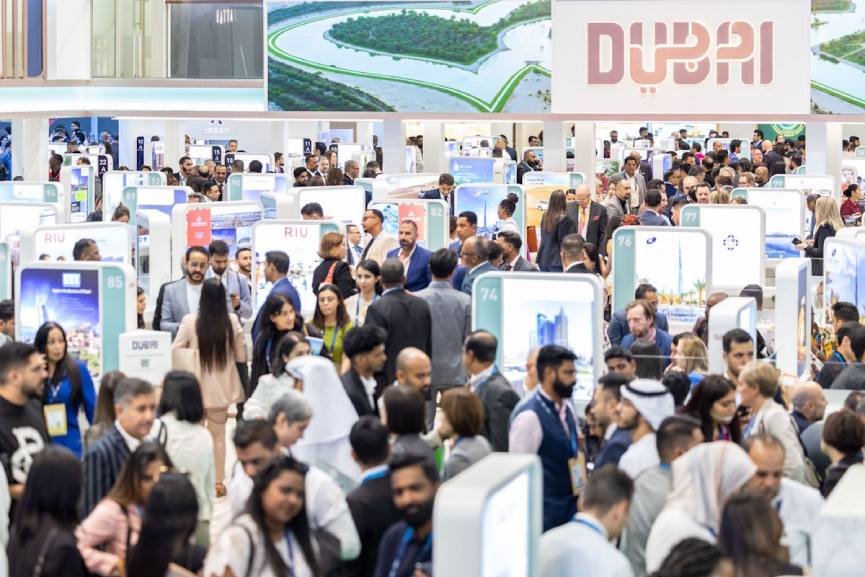Middle East tourism spending is expected to reach a massive $350 billion by 2030, according to industry experts. The growth is being driven by increased interest in luxury travel, business tourism, and large-scale sports events across the region.
Countries like the United Arab Emirates (UAE) and Saudi Arabia are leading the charge with ambitious tourism plans. These plans include major infrastructure projects, visa reforms, and world-class event hosting that attract international visitors in large numbers.
This sharp rise in Middle East tourism spending is not just about holidays. It reflects the region’s changing economic focus and a desire to reduce dependence on oil by investing in non-oil sectors like tourism, culture, and hospitality.

Gulf Countries Invest Big in Travel and Hospitality
The Gulf region is already seeing the results of its investments in tourism. Saudi Arabia, for example, has a long-term vision to become a global travel hotspot through its Vision 2030 initiative. The country aims to welcome 150 million visitors annually by the end of the decade.
Saudi Arabia is building massive tourism projects such as NEOM, Red Sea Global, and Qiddiya, all designed to attract high-income travelers. The kingdom also hosted major events like the Asian Winter Games, Formula 1 races, and international music festivals, drawing global attention.
Meanwhile, the UAE continues to thrive as a tourist hub, especially Dubai and Abu Dhabi. These cities already attract millions of visitors yearly and offer a mix of luxury, shopping, culture, and business facilities.
Middle East tourism spending is rising not just from international tourists but also regional travelers, especially those attending events, business meetings, or enjoying staycations.
Luxury Travel: A Key Growth Segment in Middle East Tourism
One of the most prominent drivers behind the rise in Middle East tourism spending is the luxury segment.
From five-star hotels to private jets, fine dining, and exclusive shopping experiences, luxury travel is booming. Wealthy tourists from Europe, Asia, and the US are choosing Middle Eastern cities like Dubai, Riyadh, and Doha for their upscale offerings.
Hotel brands such as Ritz-Carlton, Four Seasons, Bulgari, and Mandarin Oriental are expanding aggressively across the region. New developments are also focusing on wellness tourism, eco-luxury retreats, and personalized experiences, which appeal to high-net-worth travelers.
In cities like Dubai, private desert safaris, yacht rentals, and luxury mall tours are becoming increasingly popular among premium visitors.
Business and MICE Travel Fuel the Tourism Surge

Another major reason for rising Middle East tourism spending is business travel, including Meetings, Incentives, Conferences, and Exhibitions (MICE).
Dubai and Abu Dhabi have become top global destinations for international business events. The Dubai World Trade Centre and Abu Dhabi National Exhibition Centre (ADNEC) host hundreds of large-scale conferences, exhibitions, and trade shows every year.
Similarly, Saudi Arabia is developing its own MICE infrastructure with modern convention centers and international forums like FII (Future Investment Initiative).
Corporate travelers often extend their stays to enjoy the cultural and entertainment offerings of the host city. This mix of business and leisure—also called “bleisure” travel—is increasingly common in the region.
Mega Sporting Events Bring in Global Crowds
Sports tourism is another strong force pushing Middle East tourism spending higher. The region has become a magnet for major global sporting events.
Qatar set a new benchmark by successfully hosting the FIFA World Cup 2022, attracting over a million fans. The impact of the event extended well beyond Qatar’s borders, benefiting nearby countries like the UAE and Saudi Arabia.
Saudi Arabia has continued that momentum by investing billions in football, boxing, golf, and motorsports. The kingdom hosts events like the Saudi Pro League, where it signed some of the world’s top football stars, and big-ticket matches featuring names like Cristiano Ronaldo.
Even e-sports and adventure tourism are on the rise in places like AlUla, where the natural landscape is used for hiking, rock climbing, and hot air ballooning.
Digital Nomads and Remote Workers Also Contribute
Middle East tourism spending is also benefiting from the growing number of digital nomads and remote workers. Countries like the UAE have introduced freelancer visas and digital nomad permits that allow people to live and work in the region without traditional employment.
This group tends to stay longer and spend more on local services such as co-working spaces, cafés, gyms, and short-term rentals. Dubai has seen a rise in co-living and working communities designed for this demographic.
Smart Technology and Sustainability Attract Modern Travelers

As Middle East tourism spending increases, governments and developers are also focusing on technology and sustainability to meet the expectations of today’s travelers.
Many cities are integrating smart tourism solutions like contactless check-ins, AI-powered concierge services, virtual tours, and real-time translation apps. These upgrades improve convenience for both leisure and business tourists.
At the same time, there is rising demand for eco-friendly tourism. Countries are investing in green buildings, electric transport, and wildlife conservation to attract eco-conscious travelers.
Projects like Amaala and The Red Sea in Saudi Arabia are examples of sustainable luxury tourism, built with minimal impact on nature.
Challenges Still Remain for the Region
Despite the positive outlook, Middle East tourism spending growth is not without its challenges. Visa regulations, global economic uncertainties, and geopolitical tensions can all impact visitor flows.
Also, attracting tourists year-round in countries with extreme summer temperatures is a hurdle. To tackle this, many destinations are building indoor attractions, water parks, and air-conditioned entertainment venues to stay busy even during the hottest months.
There is also a need to develop human capital to serve this booming industry. Training local talent in hospitality, languages, and customer service is vital for maintaining high standards.
The Road Ahead: A Diverse, Billion-Dollar Tourism Economy
With bold plans, massive investments, and a strategic shift toward non-oil revenues, the Middle East is positioning itself as a top global tourism region.
From luxury resorts and high-profile events to eco-tourism and business hubs, the region is crafting a tourism sector that is diverse, resilient, and future-ready.
If current trends continue, Middle East tourism spending hitting $350 billion by 2030 may not just be a projection—it may become a milestone in a much bigger transformation story.
Read More: Ctrl Alt Gets Dubai VARA License to Offer Tokenization Services













